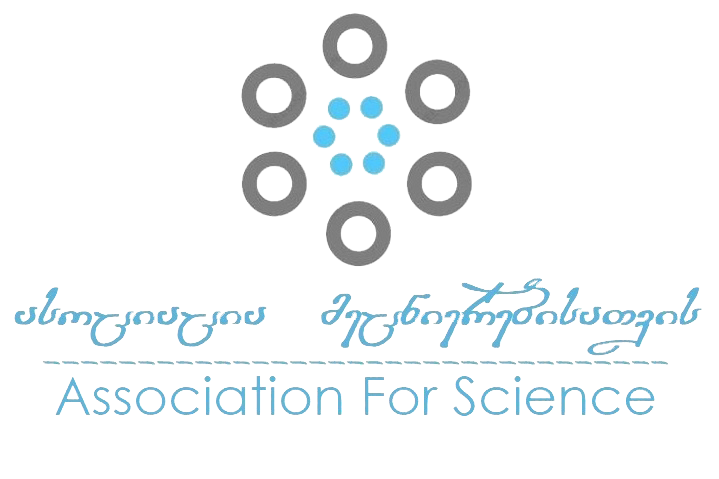მუსთერაპიის გამოყენების ფორმები და მეთოდები შეზღუდული შესაძლებლობის მქონე მოსწავლეებთან
DOI:
https://doi.org/10.52340/sou.2023.19.56საკვანძო სიტყვები:
მუსთერაპია, მეთოდები, შშმ მოსწავლეები, ემოცია, შემეცნება, შთაბეჭდილება, თამაში, მელოდია, ყურადღება, დადებითი დინამიკაანოტაცია
მუსიკა შეიძლება გახდეს ჩვეულებრივი და განვითარებაში პრობლემების მქონე სკოლის მოსწავლეების, ასევე რთულ ცხოვრებისეულ პირობებში მყოფი და დევიანტური ქცევის მქონე ბავშვების ემოციონალური მდგომარეობის პედაგოგიური რეგულირების შეუცვლელი საშუალება. სკოლაში მასწავლებელმა შშმ მოსწავლეებთან მუშაობისას შეიძლება წარმატებით გამოიყენოს მუსიკის შესაძლებლობები. მუსიკის ზემოქმედების ფორმები და მეთოდები მრავალფეროვანია, ის არ უნდა ატარებდეს ძალდატანებით ხასიათს და მოსწავლე უნდა გამოხატავდეს ურთიერთობის მზაობას. სასიმღერო ჟანრი განსაკუთრებულად ახლო და მისაწვდომია ბავშვებისათვის. სიმღერა არეგულირებს სუნთქვის რიტმს, პულსს, წნევას, ტემპერატურას, ხსნის დაძაბულობას. ამიტომ ზუსტად შერჩეული მელოდია სასიკეთო გავლენას ახდენს მათზე და აჩქარებს გამოჯანმრთელებას. მუსიკის აღქმა (მოსმენა) ბავშვებისთვის მეტად საყვარელ და საინტერესო საქმიანობას წარმოადგენს. მასწავლებელმა ბავშვებს შეიძლება შესთავაზოს სპეციალურად შერჩეული მუსიკალური ნაწარმოებების მოსმენა და ამ პროცესში აღძრული საკუთარი განცდების, ფიქრების, მოგონებების განხილვა. შემდგომ, იქმნება შთაბეჭდილება - სახე (ნახატი, ნაკეთობა პლასტელინისა თუ თიხისგან). ეს ხერხი ეხმარება ბავშვს გახსნაში, საკუთარი თავის, შინაგანი ჰარმონიის “გაგონებაში”, სტრესის მოხსნაში.შშმ ბავშვებთან მუშაობისას ძალიან ეფექტურია თამაშის გამოყენება. კორექციული ამოცანების თამაშის ფორმით გადაწყვეტა ბავშვებისა და უფროსების ერთობლივი შემოქმედების კეთილგანწყობილი, ემოციურად დატვირთული ატმოსფეროს შექმნის შესაძლებლობას იძლევა, აქეზებს თითოეულ ბავშვს მიიღოს მონაწილეობა სასწავლო პროცესში, ხელს უწყობს შემეცნებითი ინტერესისა და ყურადღების შენარჩუნებას.მუსიკისა და თამაშის შეხამება იწვევს ბევრ ემოციას, ბავშვები სიამოვნებით ერთვებიან საქმიანობაში. ისინი მზად არიან შეასრულონ ისეთი ქმედებები, რომლის უნარი არ აქვთ სხვა მეცადინეობებზე. მათ უჩნდებათ ერთმანეთთან და უფროსებთან ურთიერთობის, გარშემომყოფების ქმედების მიბაძვის სურვილი. წყდება აგრეთვე შემეცნებითი სფეროს ამოცანები: ბავშვები ცნობენ ნაცნობ მელოდიებს, გამოიცნობენ სხვადასხვა ინსტრუმენტის ჟღერადობას, ანუ თვალსაჩინო ხდება სმენითი აღქმის, მეხსიერების, ყურადღების ფორმირების დადებითი დინამიკა.სწორედ მუსიკალური თამაშების მეშვეობით ბავშვები იწყებენ სიმღერას და მარტივი სიტყვების წარმოთქმას, მაშინ, როდესაც ჩვეულებრივ ცხოვრებაში ისინი განიცდიან აქტიური მეტყველების დაუფლებაში გარკვეულ სირთულეებს.
წყაროები
აშუღაშვილი (2018) აშუღაშვილი მარი. მუსიკისა და სიყვარულის თერაპია. ჟურნალი ავერსი #137. ელ-ვერსია: https://www.aversi-.ge/cnobari/1138/musikisa-da-siyvarulis-Terapia
ძაძამია (2014) ძაძამია ნატა, მუსიკა და მისი თერაპიული დანიშნულება. დავითიანნის ფსიქოლოგიის ცენტრი. ელ. ვერსია: http://psycholo-gycommetee.blogspot.com/2014/05/blog-post_25.html
ჯანჯღავა (2018) ჯანჯღავა ნ. მუსიკა როგორც მკურნალი . ელ-ვერსია: http://natiajanjgava.blogspot.com/p/blog-page_27.html
Минько (2014) Минько Л. Р. Музыкальное воспитание детей с ограниченными возможностями здоровья детей. ელ-ვერსია: https://nsportal.ru/shkola/muzyka/library/2014/12/07/muzykalnoe-vospitanie-detey-s-ogranichennymi-vozmozhnostyami
Попок (2012) Попок А. Г. Музыкотерапия для детей с ограниченными возможностями ელ-ვერსია:https://cyberleninka.ru/article/n/muzykoterapiya-dlya-detey-s-ogr-anichennymi-vozmozhnostyami
Осипова, Уфимцева (2006) Осипова Н., Уфимцева Л., Артпедагогика- лекарство от стресса. ელ-ვერსია: http://zdd.1seპtember.ru/article.php?ID=-200602306



